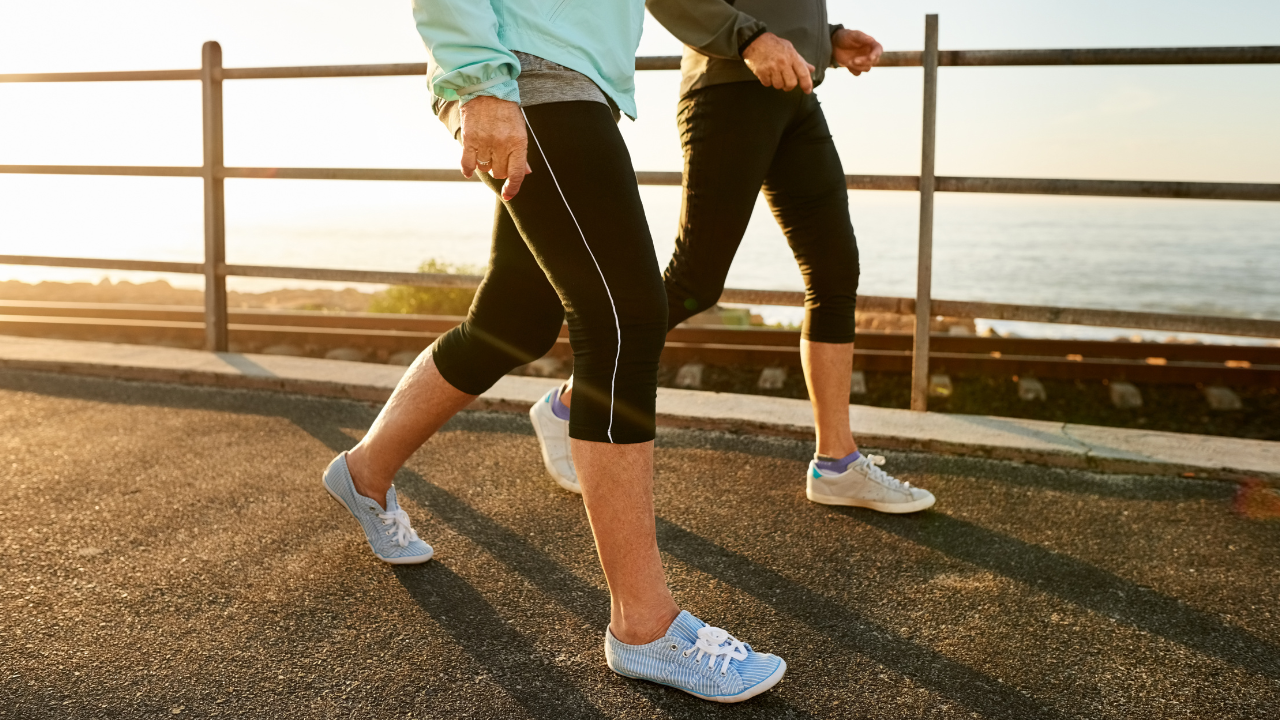ARTICLE AD BOX

Walking is good for older adults. A new study from the University of Chicago Medicine says walking pace is important. Walking slightly faster helps older adults stay fit. Researchers suggest adding 14 steps per minute. This improves physical function and delays frailty. They also created a smartphone app to measure walking pace.
Walking is the simplest form of exercise that you can add to your routine and reap incredible health benefits. As one ages, staying active becomes more than just a lifestyle choice - it’s a necessity for maintaining strength, balance, and overall well-being.
This is where walking plays a crucial role. Well, walking at the right pace matters. A new study suggests that the pace of walking has paramount importance when it comes to keeping older adults fit. The study, led by researchers at the University of Chicago Medicine, found that older adults who walk just a little faster than usual may experience significant improvements in physical health, potentially delaying the onset of frailty and preserving independence. The findings are published in PLOS ONE.Frailty and walking Frailty is a medically defined condition in older adults that increases vulnerability to everyday stresses, leading to a higher risk of falls, hospitalization, and loss of independence. The warning signs of frailty include:
- Unintentional weight loss
- Moving slowly
- Feeling weak
- Persistent tiredness
- Low levels of physical activity
Most of these signs are linked to how active someone is. There is no debate that walking is an effective way to help older adults improve their overall health and quality of life and maintain independence for longer.
However, most often they don’t know how fast to walk to get these benefits. Usually, a ‘talk test’ is used as a guide to measure walking intensity, where people should be able to talk comfortably, but have difficulty singing. This method, however, is subjective and may not be used consistently. This is where the recent study is significant, Walking pace matters

The researchers found that walking slightly faster can help older adults stay fit. They suggested adding 14 steps to the usual person’s pace in a minute.
This slight acceleration improved physical function among older adults who were frail or at risk of becoming frail. In a second study, the researchers developed and tested a smartphone app designed to accurately measure walking pace, making it easier to integrate this beneficial practice into daily life.Why study walking pace?The researchers measured their pace according to the walking cadence, which is the number of steps taken per minute.
It is an intuitive and pragmatic way to measure walking intensity. “Older adults have a high risk of complications associated with surgery. Traditionally, surgical teams have relied on physical function questionnaires to risk-stratify patients, but I thought there must be a way to develop more objective metrics,” Daniel Rubin, MD, an anesthesiologist at UChicago Medicine, said in a statement.
Walking faster is healthier

The researchers studied older adults classified as frail or prefrail in the secondary analysis of a randomized controlled trial.
The participants, older adults living in retirement communities, were enrolled in structured walking programs. The cadence was measured by a device fitted to their thigh. One group of participants were encouraged to walk ‘as fast as safely possible,’ while another group walked at their usual comfortable pace.The findings

The study found that people who increased their cadence by at least 14 steps per minute above their usual pace (to roughly 100 steps per minute) experienced substantial improvements in their functional capacity, demonstrated by their ability to walk longer distances in a standardized test.“People who haven’t experienced frailty can't imagine how big a difference it makes to be able to not get tired going to the grocery store or not need to sit down while they're out,” Rubin said.
From right shoes to warming up right: 5 safety rules to follow while walking
An intuitive walking appBased on these findings, Rubin's team created a smartphone app to measure walking cadence accurately."We didn't necessarily trust smartphones’ built-in analytics. Instead, we built an app that uses a novel open-source method to analyze the data measured by the phone and lets us actively engage users in brief, deliberate walking tests, ensuring accurate measurement,” Rubin said. “We wanted to make it as low-barrier as possible so it’s easy for older adults to use without additional equipment. The people who need the most help are usually the least well-equipped to get started,” he added. Expert opinionThe researchers stressed the numerous health benefits of walking. "Even casual walking had positive effects on our study participants," Rubin said. He also added that those who can increase their walking pace should, as it can yield even greater results. It is a simple yet effective strategy for people who want to stay healthier and more independent as they age.



.png)
.png)
.png)
















 10 hours ago
6
10 hours ago
6









 English (US) ·
English (US) ·